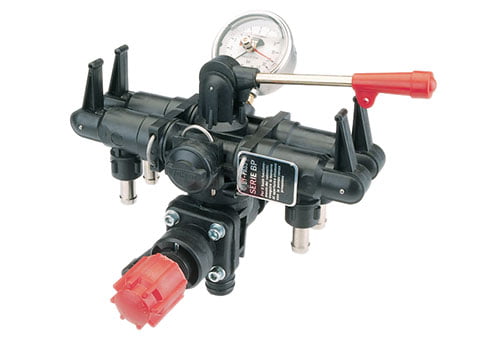
Maximize Power Savings and Convenience With Advanced Building Automation Controls
In the realm of modern design and center administration, the assimilation of advanced structure automation regulates stands as a critical development. By harnessing the power of automation, buildings can adapt, react, and evolve in methods that were once unthinkable.
Power Efficiency Perks
Power effectiveness advantages can significantly lower power usage and functional prices in structures. Energy-efficient systems, such as sophisticated building automation controls, can optimize the use of resources like illumination, heating, and air conditioning, leading to lower power costs over time.
Furthermore, enhanced power effectiveness can prolong the life-span of building tools and systems. By operating more successfully, HVAC systems, lighting fixtures, and other structure components experience much less deterioration, resulting in reduced upkeep and replacement expenses. Additionally, energy-efficient structures usually regulate greater residential property values and rental prices, supplying long-term economic benefits to owners.
Furthermore, energy performance can enhance passenger comfort and efficiency. Appropriately regulated interior environments with ideal lights and thermal problems produce an even more enjoyable and helpful workspace, bring about improved worker contentment and efficiency. In general, the power performance benefits related to advanced building automation controls are diverse, incorporating price financial savings, environmental stewardship, and owner well-being.
Improved Convenience Control
Enhancing convenience control in structure settings requires an advanced combination of innovative automation systems for ideal occupant well-being. By utilizing sophisticated building automation controls, facilities can tailor the indoor environment to meet the particular requirements and choices of owners. These systems make it possible for precise regulation of temperature level, lighting, and ventilation, creating a effective and comfy ambience. Occupant fulfillment and efficiency are carefully linked to thermal comfort, making it important to have systems in area that can adjust to altering conditions in real-time.
Enhanced convenience control goes beyond basic temperature level changes. It consists of functions such as customized settings, tenancy sensing units, and all-natural light use to create a receptive and vibrant atmosphere. By incorporating these innovative controls, buildings can not just boost convenience but likewise improve energy efficiency by maximizing system operations based upon real tenancy and use patterns. Eventually, prioritizing passenger comfort with advanced automation systems brings about a much more enjoyable and healthier interior atmosphere.
Functional Performance Improvements

In addition, the application of real-time surveillance and analytics devices enables structure drivers to identify energy inadequacies and functional anomalies without delay. By continuously checking energy usage patterns and system efficiency metrics, modifications can be made in real-time to enhance power intake and guarantee peak operational effectiveness. control valves. Additionally, incorporating demand action strategies right into structure automation controls can further boost functional performance by dynamically adjusting power usage based on grid conditions and prices signals
Indoor Environment Optimization
Reliable indoor environment optimization is a basic facet of structure automation controls, guaranteeing passengers' comfort and wellness while optimizing power savings. By utilizing advanced sensing units and controls, building automation systems can continually readjust and monitor temperature, humidity levels, air quality, and air flow to develop an optimal indoor environment. Keeping regular and comfy problems not only enhances owner contentment yet additionally boosts productivity and overall well-being.
Indoor site here climate optimization additionally plays a crucial duty in power effectiveness. By fine-tuning heating, air conditioning, and ventilation systems based upon real-time information and occupancy patterns, developing automation controls can dramatically lower power usage - control valves. Applying techniques such as demand-controlled ventilation and thermal zoning can aid lessen energy waste while making certain that each area of the structure obtains the needed conditioning.

Lasting Setting Development
Building automation controls not just maximize indoor climate conditions for power effectiveness and passenger comfort however likewise lay the foundation for creating a lasting atmosphere through tactical management of sources and systems. By integrating advanced structure automation modern technologies, such as sensors, actuators, and smart software program, centers can adjust and monitor power usage in real-time to minimize waste and minimize their carbon footprint. These systems allow predictive maintenance, recognizing potential problems prior to they intensify and optimizing tools performance to boost durability and efficiency.
Additionally, sustainable setting creation expands beyond power administration to include water preservation, waste reduction, and interior air high quality renovation. Structure automation controls can regulate water use, spot leakages, and guarantee correct garbage disposal methods, adding to general sustainability initiatives. Additionally, by monitoring and managing air flow and filtration description systems, these modern technologies enhance owner health and wellness and performance while decreasing power intake associated with cooling and heating operations.
Final Thought
To conclude, advanced building automation manages deal significant benefits in terms of energy financial savings, convenience control, operational efficiency, interior environment optimization, and developing a sustainable environment. By applying these controls, buildings can accomplish optimum performance while decreasing power usage and boosting passenger convenience. It appears that making use of sophisticated automation technology is crucial in improving structure efficiency and developing an extra lasting future.
Power effectiveness advantages can dramatically lower power intake and functional expenses in buildings. On the Learn More whole, the energy efficiency advantages linked with advanced building automation controls are multifaceted, encompassing cost financial savings, ecological stewardship, and owner wellness.
In addition, including demand feedback approaches right into building automation controls can further boost operational efficiency by dynamically adjusting energy use based on grid conditions and rates signals.
Building automation controls not just maximize indoor environment problems for energy performance and passenger comfort but also lay the structure for producing a sustainable setting with tactical administration of sources and systems.In verdict, advanced building automation regulates deal substantial advantages in terms of energy financial savings, comfort control, operational performance, interior environment optimization, and creating a sustainable environment.